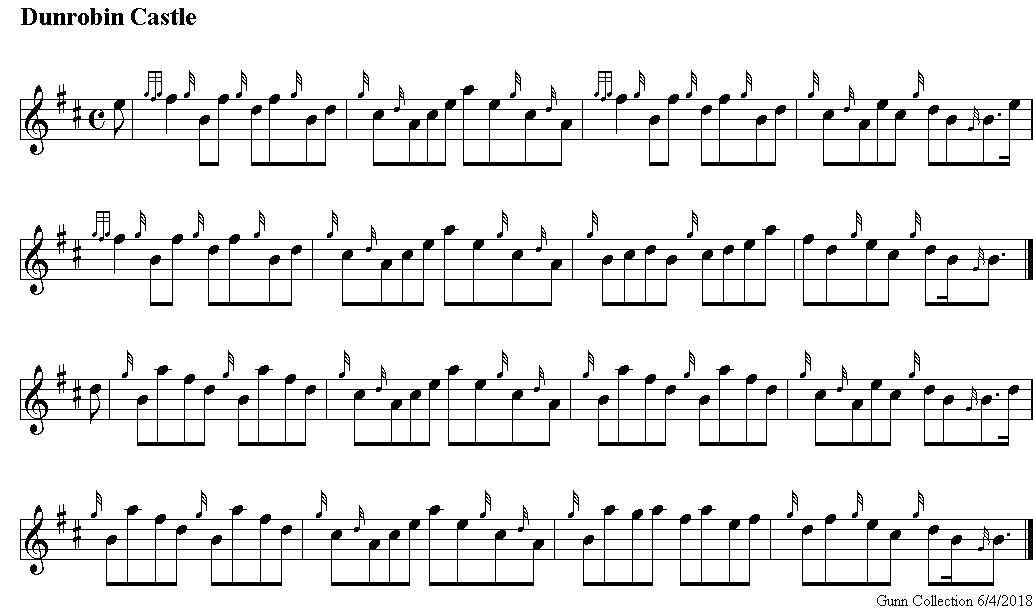|
Dunrobin Castle is a
stately home in Sutherland, in the Highland area of Scotland,
and the family seat of the Earl of Sutherland and the Clan
Sutherland.
The lands of Sutherland
were acquired before 1211, by Hugh, Lord of Duffus, grandson of
the Flemish nobleman Freskin. The Earldom of Sutherland was
created around 1235 for Hugh's son, William, surmised to have
descended from the House of Moray by the female line. The castle
may have been built on the site of an early medieval fort, but
the oldest surviving portion, with an iron yett, is first
mentioned in 1401. The earliest castle was a square keep with
walls over 6 feet (1.8 m) thick. Unusually, the ceilings of each
floor were formed by stone vaults rather than being timber. The
castle is thought to be named after Robert, the 6th Earl of
Sutherland (d.1427).
Dunrobin Castle was
built in the midst of a tribal society, with Norse and Gaelic in
use at the time. Robert the Bruce planted the Gordons, who
supported his claim to the crown, at Huntly in Aberdeenshire,
and they were created Earls of Huntly in 1445. The Earldom
passed to the Gordon family in the 16th century when the 8th
Earl of Sutherland gave his daughter Elizabeth in marriage to
Adam Gordon. After the 8th Earl died in 1508, Elizabeth's elder
brother was declared heir to the title, but a brieve (writ) of
idiocy brought against him and his younger brother by the
Gordons meant that the possession of the estate went to Adam
Gordon in 1512.
In 1518, in the absence
of Adam Gordon, the castle was captured by Alexander Sutherland,
the legitimate heir to the Earldom of Sutherland. The Gordons
quickly retook the castle, captured Alexander and placed his
head on a spear on top of the castle tower. Alexander's son John
made an attempt on the castle in 1550, but was killed in the
castle garden. During the more peaceful 17th century, the keep
was extended with the addition of a large house, built around a
courtyard to the south-west.
During the Jacobite
Rising of 1745, the Jacobites under Charles Edward Stuart
stormed Dunrobin Castle without warning, because the Clan
Sutherland supported the British government. The 17th Earl of
Sutherland, who had changed his surname from Gordon to
Sutherland, narrowly escaped them, exiting through a back door.
He sailed for Aberdeen where he joined the Duke of Cumberland's
army. On the death of the 18th Earl in 1766, the house passed to
his daughter, Elizabeth, who married the politician George
Leveson-Gower, later created 1st Duke of Sutherland. In 1785,
the house was altered and extended again.
Between 1835 and 1850,
Sir Charles Barry remodeled the castle in the Scottish Baronial
style for the 2nd Duke of Sutherland. Barry had been the
architect for the Palace of Westminster, home to the House of
Commons, and was much in demand. The 14th-century tower, and the
17th-century and 18th-century extensions, were retained, and
survive within Barry's 19th-century work.
n 1915, the building was in use
as a naval hospital when fire damaged the roof and much of the
interior, but was confined to the newer additions by Barry.
Scottish architect Sir Robert Lorimer was engaged to renovate
the house following the First World War. When the 5th Duke died
in 1963, the Earldom and the house went to his niece, the
current Countess of Sutherland, while the Dukedom had to pass to
a male heir and went to John Egerton, Earl of Ellesmere. Between
1965 and 1972, the house became a boarding school for boys,
taking on forty boys and five teachers in its first year. Since
1973, the house and grounds have been open to the public, with
private accommodation retained for the use of the Sutherland
family.

|



